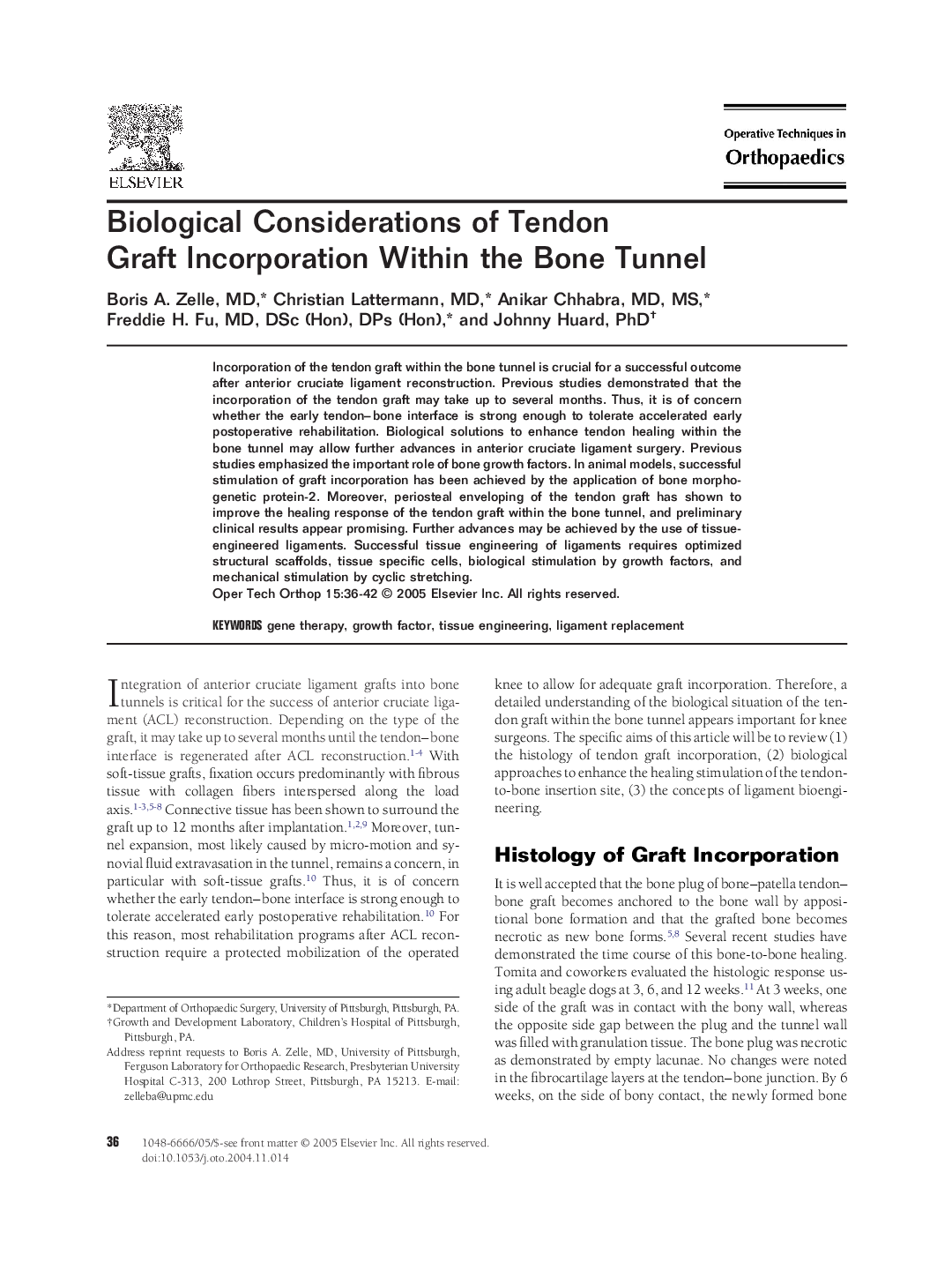| Article ID | Journal | Published Year | Pages | File Type |
|---|---|---|---|---|
| 9356718 | Operative Techniques in Orthopaedics | 2005 | 7 Pages |
Abstract
Incorporation of the tendon graft within the bone tunnel is crucial for a successful outcome after anterior cruciate ligament reconstruction. Previous studies demonstrated that the incorporation of the tendon graft may take up to several months. Thus, it is of concern whether the early tendon-bone interface is strong enough to tolerate accelerated early postoperative rehabilitation. Biological solutions to enhance tendon healing within the bone tunnel may allow further advances in anterior cruciate ligament surgery. Previous studies emphasized the important role of bone growth factors. In animal models, successful stimulation of graft incorporation has been achieved by the application of bone morphogenetic protein-2. Moreover, periosteal enveloping of the tendon graft has shown to improve the healing response of the tendon graft within the bone tunnel, and preliminary clinical results appear promising. Further advances may be achieved by the use of tissue-engineered ligaments. Successful tissue engineering of ligaments requires optimized structural scaffolds, tissue specific cells, biological stimulation by growth factors, and mechanical stimulation by cyclic stretching.
Related Topics
Health Sciences
Medicine and Dentistry
Orthopedics, Sports Medicine and Rehabilitation
Authors
Boris A. MD, Christian MD, Anikar MD, MS, Freddie H. MD, DSc (Hon), DPs (Hon), Johnny PhD,
